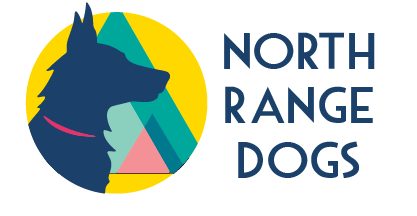Preparing your dog to be relaxed and ready to spend more time alone.
Our lives will continue to be impacted by COVID-19 for a while yet, but as restrictions ease, we will likely all be spending more time out of the house, maybe returning to something that looks a more like life before the pandemic.
Going from being home all the time to being out of the house for increasing amounts can be really hard on your dog, even if they didn’t have problems before the restrictions were put in place. Dogs are social creatures and creatures of habit; if you’ve been home 24/7 for weeks on end doing things at home, hanging out with your dog, maybe walking your dog or playing with your dog multiple times a day it can be a big shock when you head back to work. This has the potential to lead to some serious behaviour issues - but you can start working on the transition now!
1. Get back to a routine for walks and exercise!
If you’ve been walking your dog 5x a day, dial it back to what it will look like as you start to return to life outside the house. Something that works for a lot of people is a good walk in the morning and a good walk in the evening.
2. Practice social distancing from your dog!
If you’ve been available to your dog 24/7, start to introduce some times when you aren’t available. You can put them in another room or behind a gate for some time every day. Some dogs will do better at first if they can still see and hear you so you can also use gates to create time when you aren’t available. You can give your dog something special and tasty to chew and a soft place to relax on so they can chill.
3. Add some mental enrichment!
Think about how exciting your dog’s life has been with you home. With you around, they probably haven’t been bored. As we get ready to head back to work we need to make sure our dogs are still getting the enrichment they need to prevent boredom - a bored dog finds their own jobs, and we may not like the line of employment they choose! So think about how to add enrichment to your dog’s day: Ditching the bowl, use kongs (here is a great link to teaching your dog to love kongs), slow feeders, puzzle toys, scatter feeding, and training are all great ways to mentally tire out your dogs.
4. Let them nap!
Dogs need way more sleep than we do! Tiny puppies need 16-18 hours of sleep a day, and our adult dogs need a lot. Lack of sleep can lead to behaviour problems (think tired 2 year old) and our dogs usually spend most of the time we are at work sleeping, so it’s important to let them get into this routine again.
5. Reward relaxed behaviour!
If you see your dog settling quietly in the house, you can give them a quiet calm reward. Behaviours that are rewarded are repeated - rewarding quiet calm behaviours will help you get more of them.
6. Leave the House!
Finally, but most importantly, you need to start spending time out of the house. Make sure your dog has had their exercise, you can leave them with something safe and tasty to chew. Don’t make a big deal about leaving. To start with, keep your absences short! Have a coffee on your front steps, poke around in the garden for a few minutes, sit in the car and scroll social media for a bit. Ideally, you will start by leaving your dogs a couple of times a day for short periods, and then grow the amount of time you are away.
Once you are heading back to work for full days, consider having a friend or a dog walker come by to let your dog out for a break if you can’t get home yourself. A mid-day walk or even just a potty break will be very welcome for your dog!
If your dog is in distress when you leave, please take it seriously and get in touch with a certified trainer. Separation anxiety is not something dogs “just get over”, we need to work through a more structured plan if your dog is panicking when you leave.


